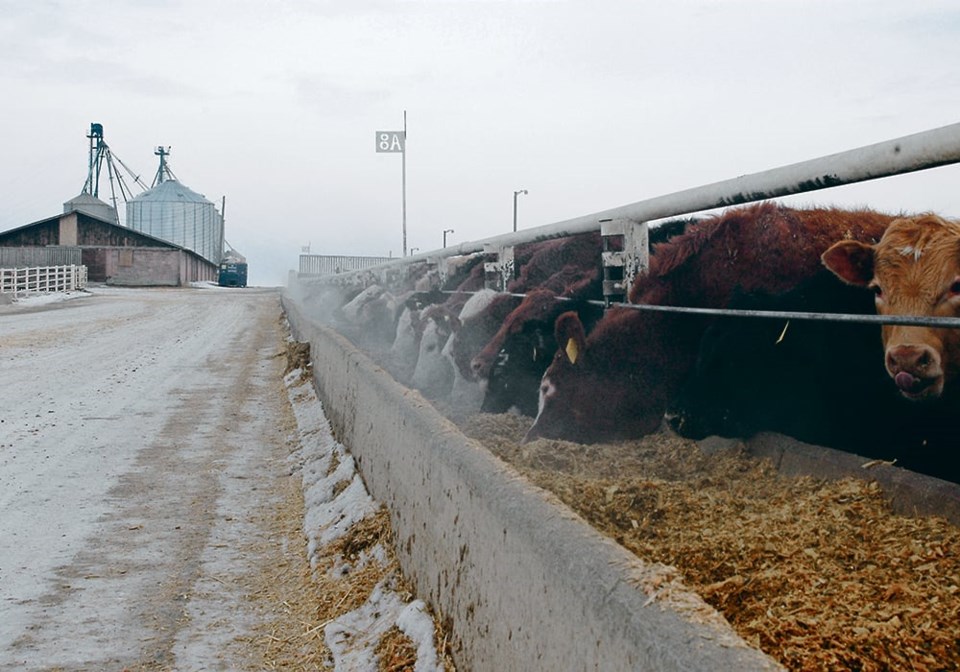SASKATOON — Steam flaking barley improves its digestibility and maximizes its value as cattle feed, said Greg Penner from the University of Saskatchewan.
Feedlots typically steam flake corn, and the Centennial Enhancement Chair in Ruminant Nutritional Physiology said as more corn is grown in Western Canada, those operations may be investing in the processing equipment that could also be used for barley.
But he told the Saskatchewan Beef Industry Conference that the two grains can’t be processed the same way.
Barley has a strong pericarp underneath its hull, which prevents rumen bugs from accessing the starch, he said. Processing helps get through that layer. Corn doesn’t have that same strong shield.
Penner said if the rumen can’t digest the barley, the starch ends up excreted in feces.
Surveys at Alberta feedlots found on average about six percent of fecal dry matter was starch, although it went as high as 18 percent.
Penner said an animal excretes about 2.2 kilograms of dry matter per day.
“If that animal is excreting feces with 12 percent starch… at $400 a tonne (feed cost)… the amount of starch being excreted works out to about 11 cents an animal a day,” he said. “That’s a significant cost that we are missing out on, or really a lost opportunity.”
A comparison of dry-rolled barley, corn and a 50-50 blend of each found the cattle ate more corn but didn’t end up heavier. Penner said this is a consistent response.
In this research, the barley was aggressively processed at a 66 percent processing index, he said, and was still coming out in feces at about 14 percent of dry matter.
The corn, which was less heavily processed to keep the fines at about five percent, resulted in more than 30 percent fecal starch.
“At $350 a tonne for cereal grain, those barley cattle excreted 12 cents a day in fecal starch, the corn cattle 26 cents and the blend, 21 cents,” Penner said.
Modifying how the feed is processed can help.
One of the challenges for feedlots is the variable kernel size in the large amounts of barley they buy. Dry milling can result in smaller kernels passing through without processing while larger kernels are pulverized.
Temper rolling, in which the kernels are hydrated to improve processing consistency, has not consistently shown benefits.
Penner said early work on steam flaking barley showed variable and often negative results, but he said that is likely because barley was flaked the same way as corn.
A study funded by SaskBarley, Saskatchewan Cattlemen’s Association, Cargill and Feedlot Health found that barley doesn’t have to be steamed as long.
The conditioning time for corn is 20 to 35 minutes, Penner said, but the study found just five minutes made barley starch more available.
The study at the Livestock and Forage Centre of Excellence also looked at flaking density. A medium flake density of 340 grams per litre and a coarser 450 grams per litre were used.
Penner said cattle ate less of the steam flaked barley compared to dry rolled or tempered, but the finished weights weren’t different. Enhanced feed conversion of the coarse barley was calculated as an 8.6 percent improvement over dry rolled barley, he said.
“If feedlots are installing flaking mills, we need to be very careful about the conditions we impose for small cereals. And they will likely be different than you would use for corn,” he said.
Fecal starch values in this study were about 14.5 percent for dry rolled barley, 18.5 at temper rolled and a higher processing index, and down to slightly more than two percent for the coarse flake barley and less than two percent for the medium flake.
Penner also said an economic analysis found the opportunity to invest about $32 to $34 per tonne into barley grain processing above dry rolling.
“Steam flaking is likely to decrease dry matter intake. It will increase starch digestibility and likely improve feed conversion but we really need to pay attention to the severity of that flaking because if we get too fine of a flaking density, we have a strong impact to reduce intake, reduce growth and that will lead to negative economic consequence,” he said. “Our data suggests about 450 grams per litre as the optimum flaking density.”




